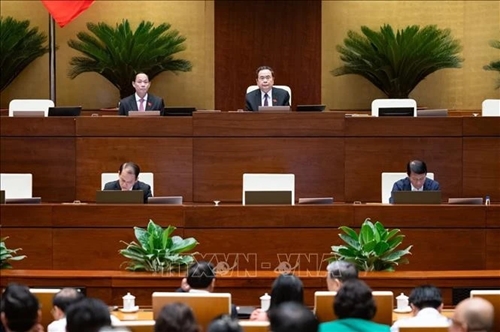The draft revised law includes seven chapters and 76 articles, covering rules on budget planning, implementation, auditing, finalization, transparency, and oversight. It also details the responsibilities and powers of agencies, organizations, units, and individuals involved in the State budgeting process.
Key changes include reducing the classification of local authorities from three groups to two, while increasing the permitted debt limits for local administrations. The draft also introduces a principle prioritizing budget allocation for science, technology, innovation, and digital transformation.
    |
 |
|
An overview of the National Assembly's discussion on May 24 |
It allows certain expenditures to be funded from both public investment and regular spending sources, raises standby fund allocations from 2% to 5%, and expands the scope of spending from the standby funds to include emergency diplomatic activities, national reserves, and loss-sharing in public-private partnership (PPP) projects.
A new article outlines the Prime Minister’s powers and responsibilities in overseeing state revenues and expenditures. The draft also proposes a revised framework for dividing value-added tax (VAT) revenues, after VAT refunds are deducted, 70% would go to the central budget and 30% to local budgets.
Also on the day, legislators will also discuss draft laws on mutual legal assistance in criminal and civil matters, a draft law on amendments and supplements to several articles of the Civil Procedure Code, the Law on Administrative Procedure, the Juvenile Justice Law, the Law on Bankruptcy, and the Law on Mediation and Dialogue at Court.
Source: VNA